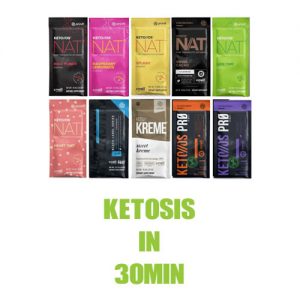Note: This is a loose transcription of the video ‘How to get Primal on a Swiss Ball – Part 4/5’.
Brad: G’day guys! Welcome to Part 4 of 5 on How to get Primal on a Swiss Ball.
Today, I am going to show you how to do squats standing on the ball, and the progressions that I use to get people to be able to do this. First up, I want to make sure that people can actually squat normally on the ground.
Swiss Ball Squats
A: Normal Squats
But I want people to be able to go down without twisting or leaning, all those sort of things have to be ruled out first through different corrective exercise and making sure that people are just aware of what their body is doing when they’re doing the squat. From the side, I want people to be able to go down keeping their upper spine nice and upright, sort of like a helium balloon lifting your chest up nice and high, maintaining a curve in your lumbar spine, as opposed to being like this.
All these sorts of movements from that position, basically tell me quite a lot of about where a person is being restricted the most. It’s harder to work with you one-on-one through this video, but if you have the ability to be able to squat like that, then you can do it with weights. This would be a fantastic step — a pretty good challenge to be able to do this sort of stuff.
B: Bosu Squats
So, the second progression, after being able to squat normally on the ground, is being able to squat on a Bosu. Now, we don’t have a Bosu here today but a Bosu is basically an acronym that stands for Both Sides Up. They’re also known as half swiss balls; half a swiss ball with a platform on top of it. Being able to actually balance on a Bosu, going up and down in a squat, is a much safer first way of being able to do it, before standing up on a ball.
C: Supported 1/4 Swiss Ball Squats
After you can do that, the next progression is to support yourself by holding onto a bar or a tree or anything when you’re standing on the ball.
Let me show you. So you would get up onto the ball like this. It’s good to also have someone helping to support you when you first do this, either holding onto the ball underneath or from the side. Imagine this branch is like a Smith Machine at a gym, a squat rack that is basically fixed and the bar is fixed to two poles, you can hold onto that and you can just basically do quarter squats. Get used to being able bend down and feel the wobble of the ball beneath you.
D: Unsupported Standing on a Swiss Ball
The next progression I like to get people to be able to do is to stand on the ball without holding anything and just get used to the ball going forward and backwards, side to side.
E: Supported Full Swiss Ball Squats

After that then it’s being able to hold the stick, the branch in this case, and squat all the way down the way you would normally squat alternately the same way you would do it on the ground.
F: Hands on, Hands off, in Bottom Squat Position
The next progression is being able to go all the way down to the bottom, holding onto the bar, then take your hands off and back on the bar a couple times, then come back up.
G: Supported Down, Unsupported Up, Swiss Ball Squats
The next progression after that is being able to squat down holding on, take your hands off the bar get your hands out of the way, hold that position and then slowly go back up, not holding on. Hold, back down, hold the position, take your hands off, slowly go back up.
H: Swiss Ball Squats Nearby a Support
The last progression is being able to actually do the whole exercise, staying near your support bar. So you don’t hold on, slowly go down to where you feel the most comfortable and then you come back up. If you feel that you can come down a bit lower, hold the position, go back up to the top. If you get nervous you are going to fall, you can grab onto the support.
I: Full Unsupported Swiss Ball Squats
The last progression is to move away from anything that is going to support you and do it the way that I showed you at the very beginning of the video. Try that out definitely on grass or somewhere soft because you will fall off at first; I’ve done it plenty of times. I’ve had a laugh, it hurts sometimes, but it’s really challenging. And if you’re getting bored in the gym, especially with squats and things like that, this is an awesome thing to be able to get good at.
So, that’s part 4 of 5 on how to get primal on a Swiss ball.
Other videos in this series:
How to Get Primal on a Swiss Ball – Part 1/5: 4 Point Horse Stance
How to Get Primal on a Swiss Ball – Part 2/5: Prone and Supine Balance
How to Get Primal on a Swiss Ball – Part 3/5: Primal Push-Ups
How to Get Primal on a Swiss Ball – Part 5/5: Kneeling Overhead Press
Which progression did you get up to so far in attempting Swiss Ball Squats?
How to Get Primal on a Swiss Ball – Part 4/5: Swiss Ball Squats – September 2013
Recommended Purchases
Swiss Ball / Stability Ball
Perform Better – USA
AOK Health – AUS
















